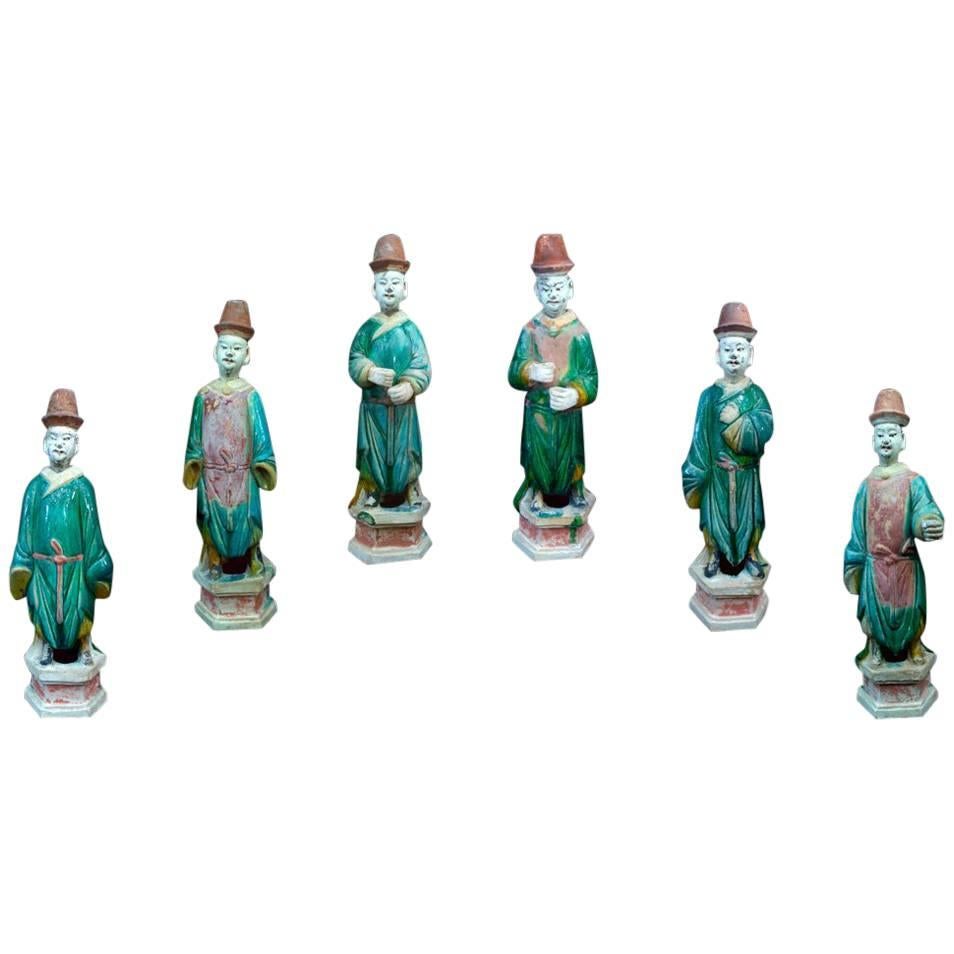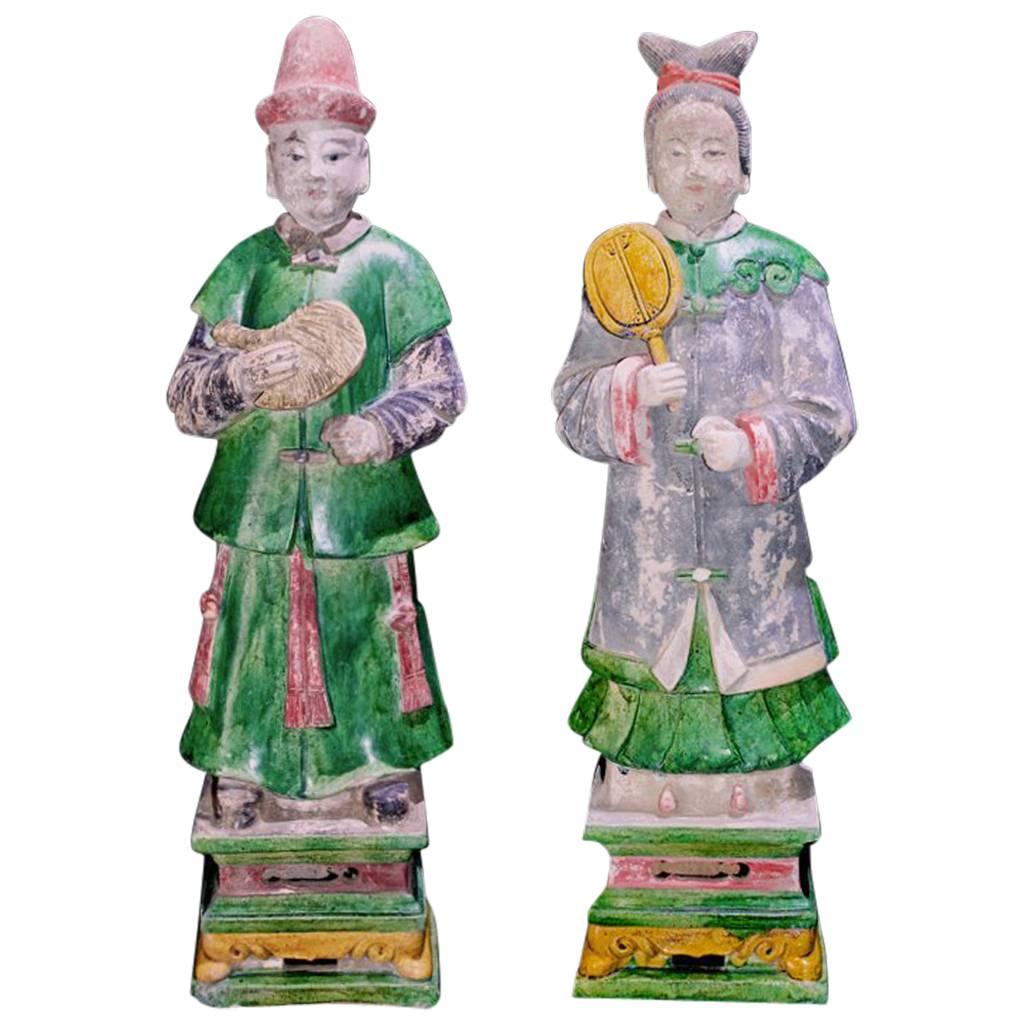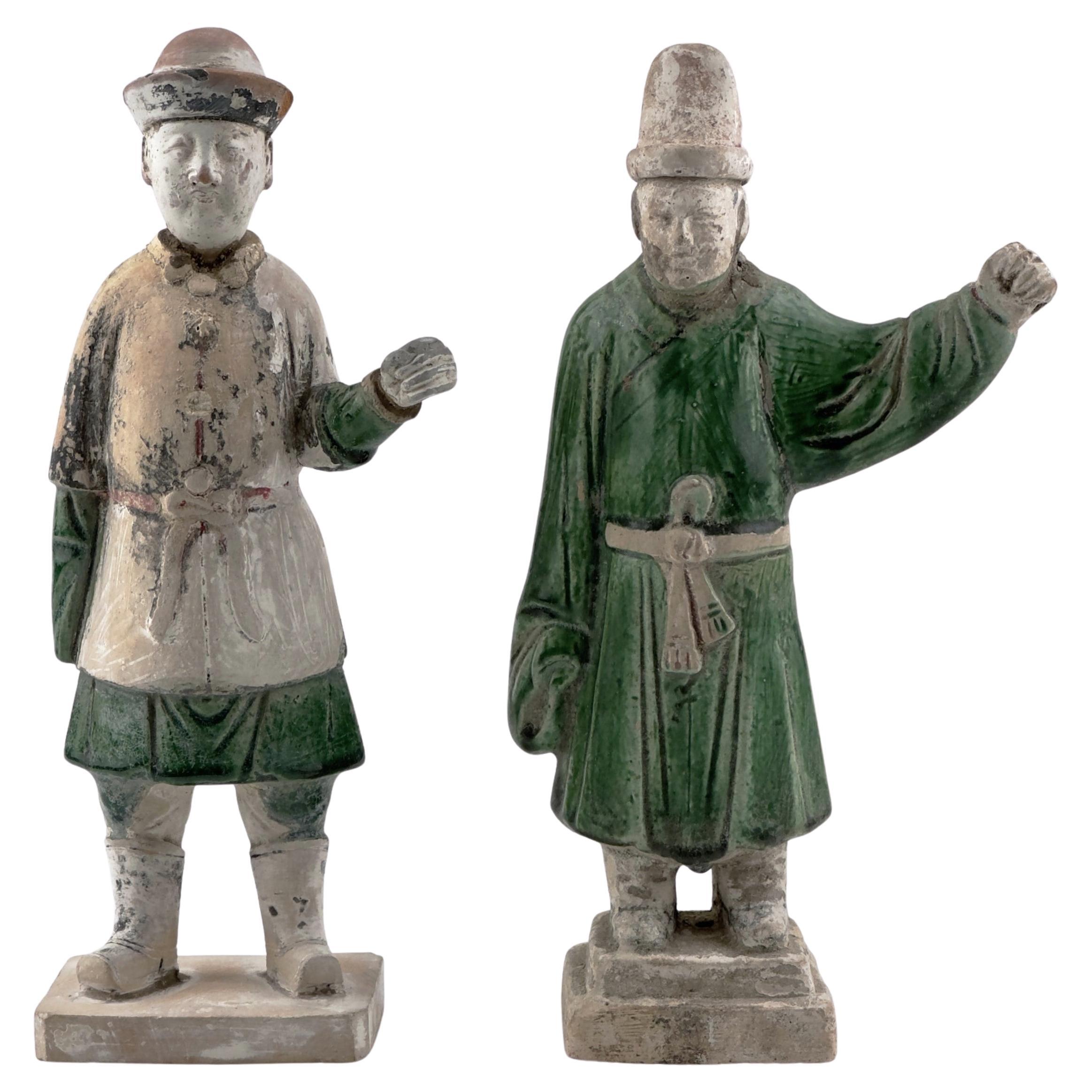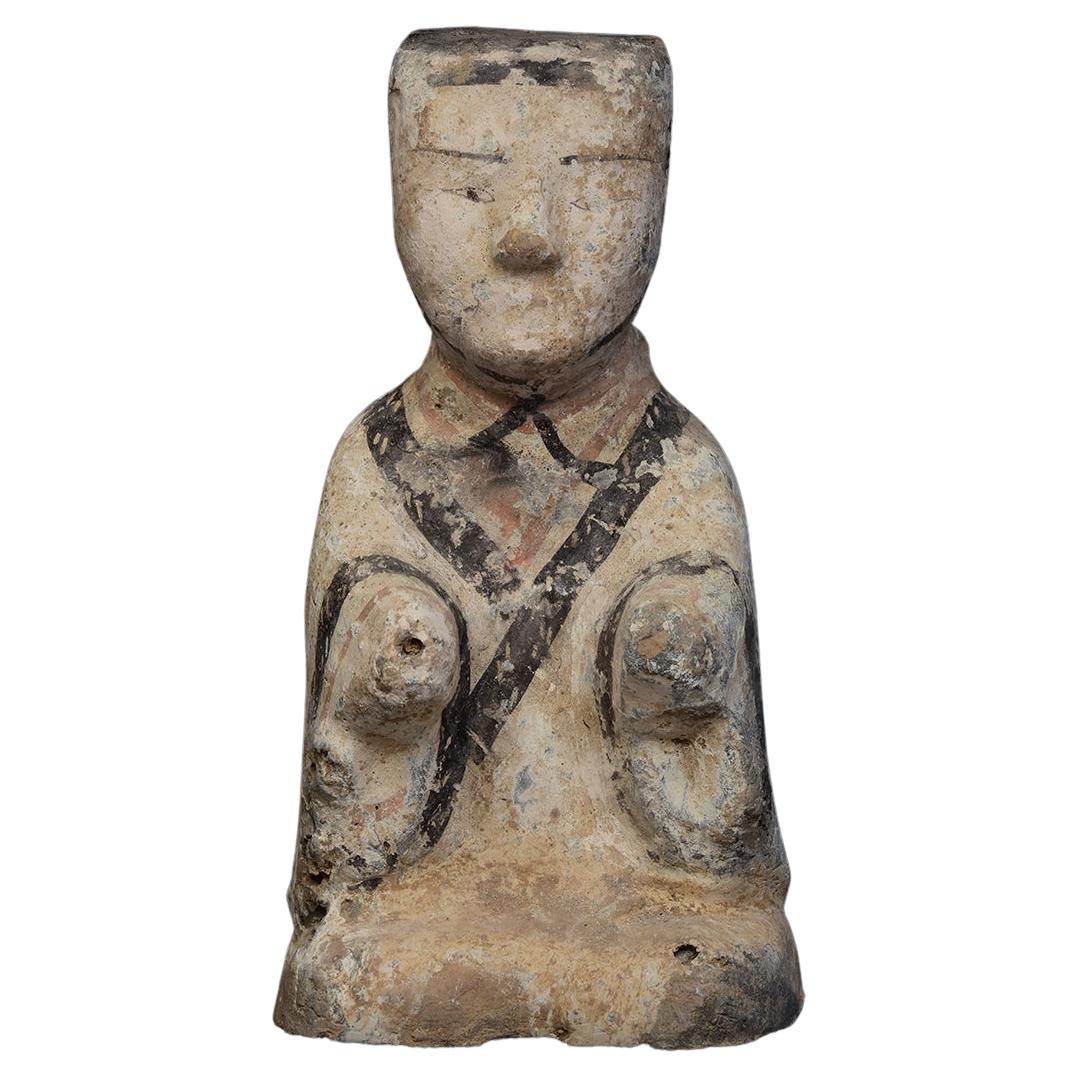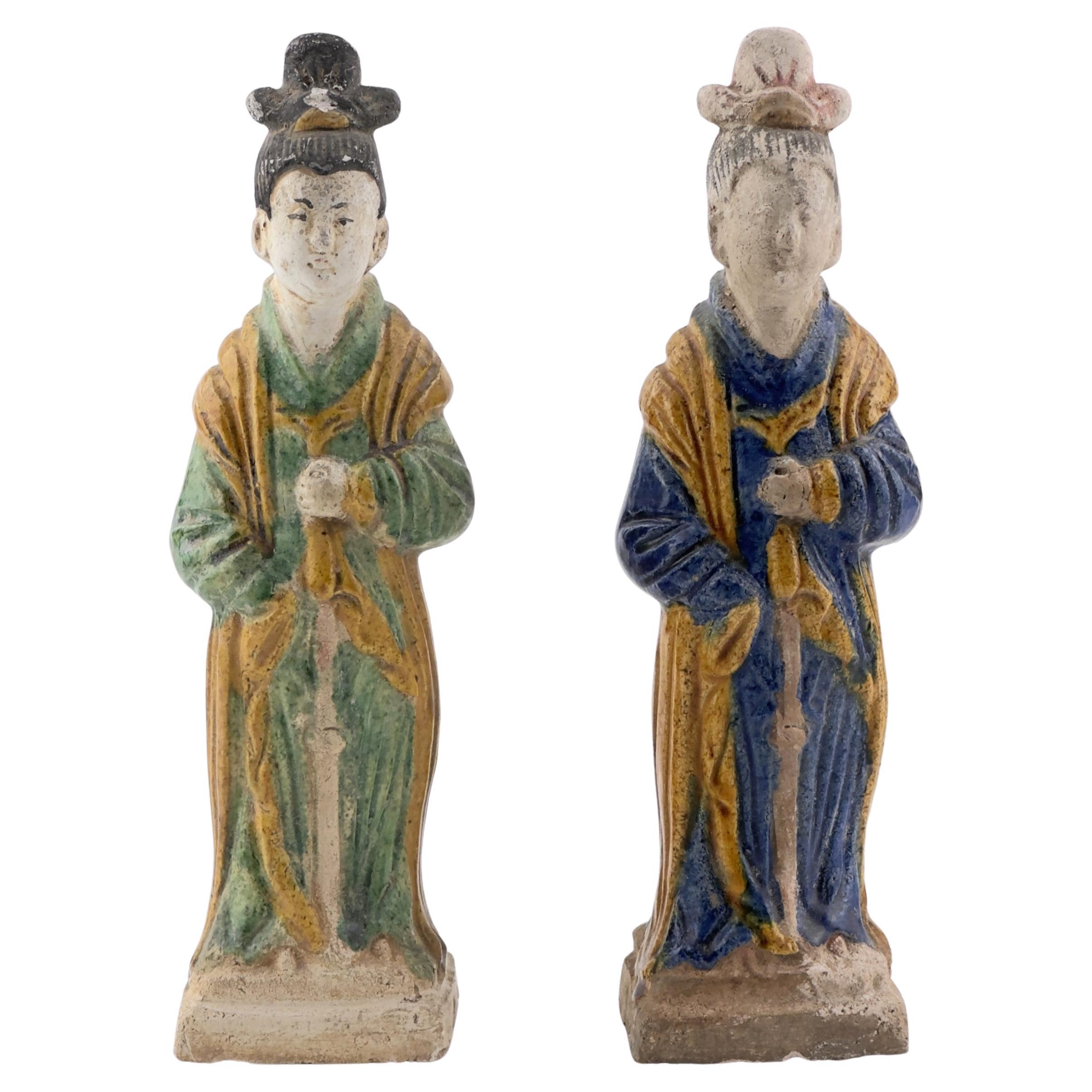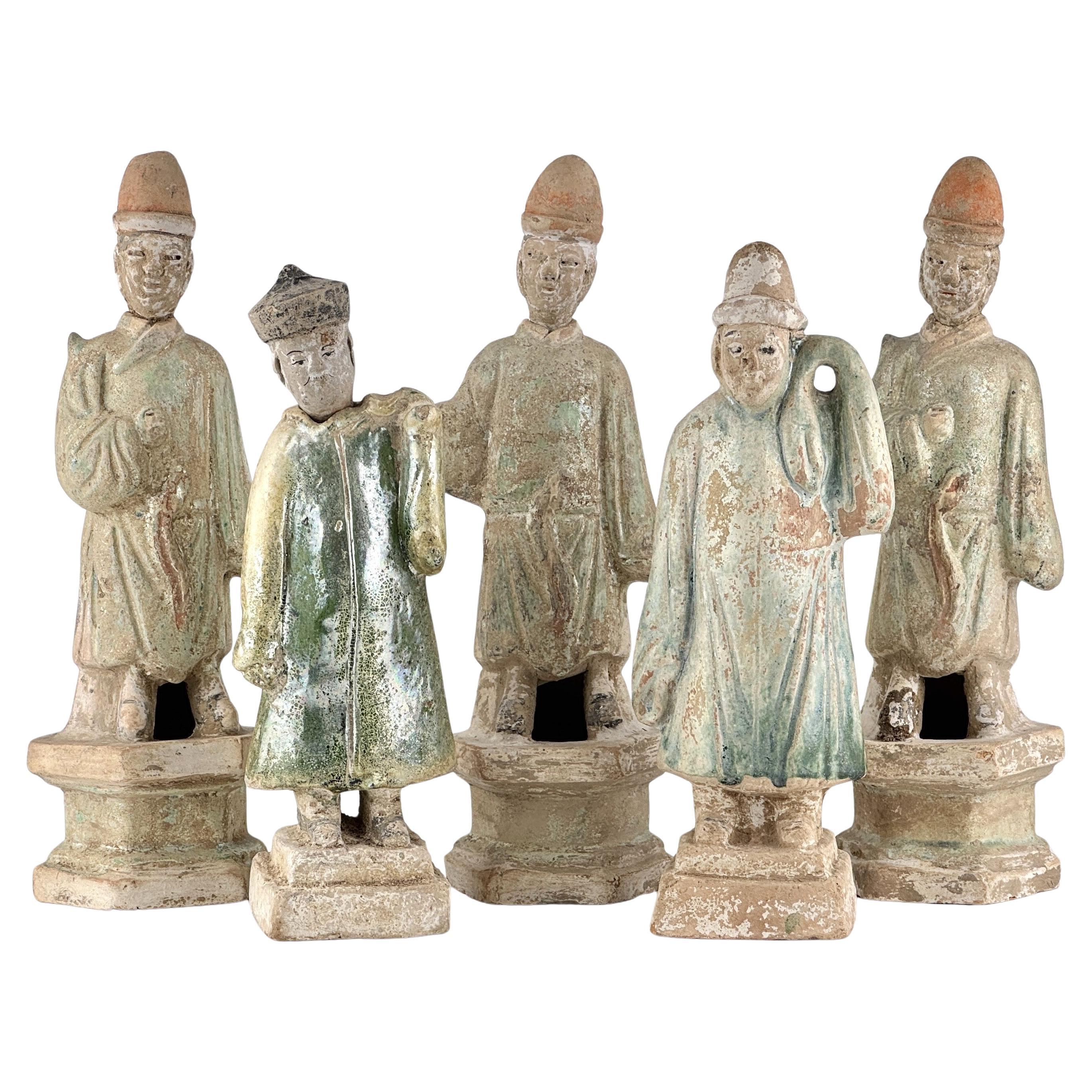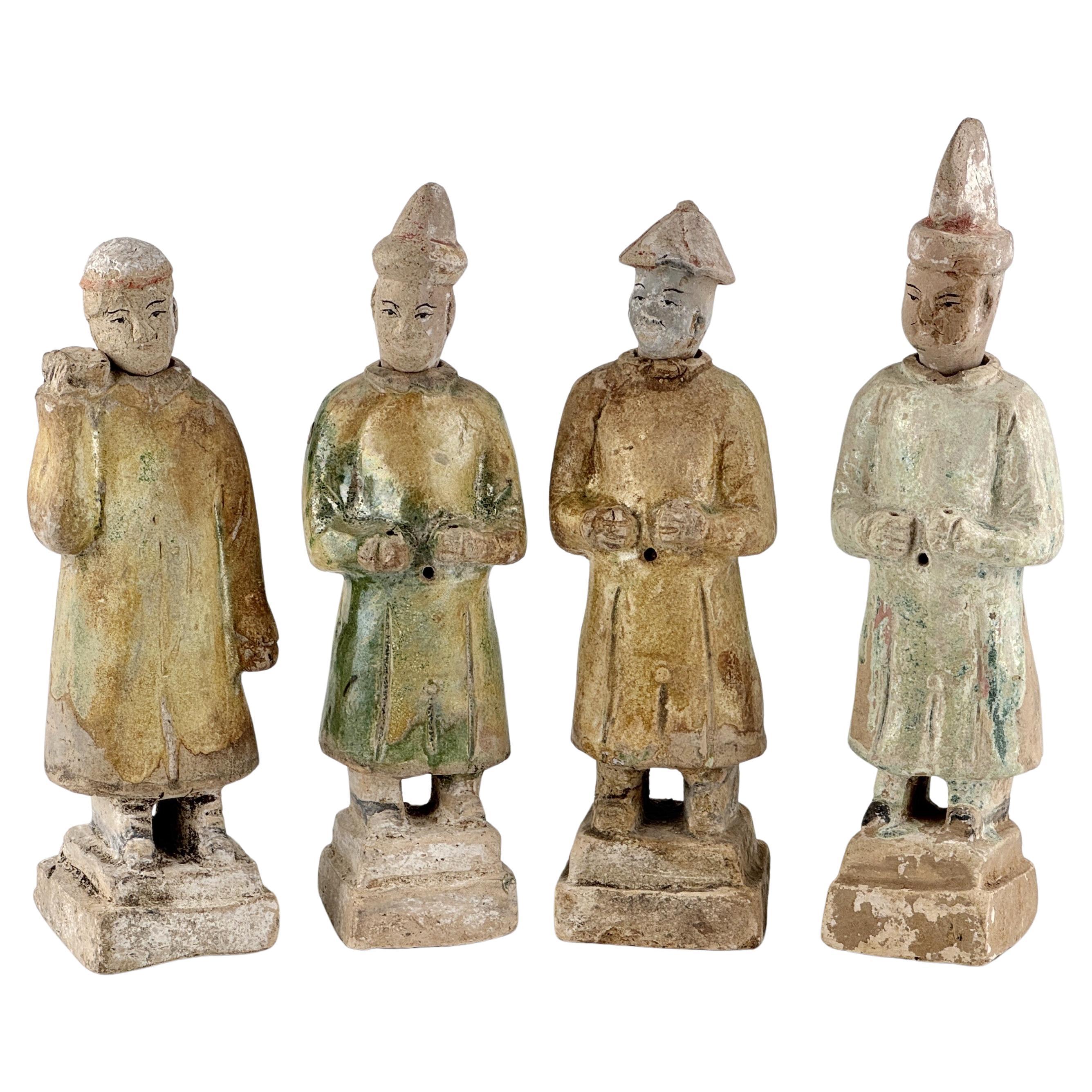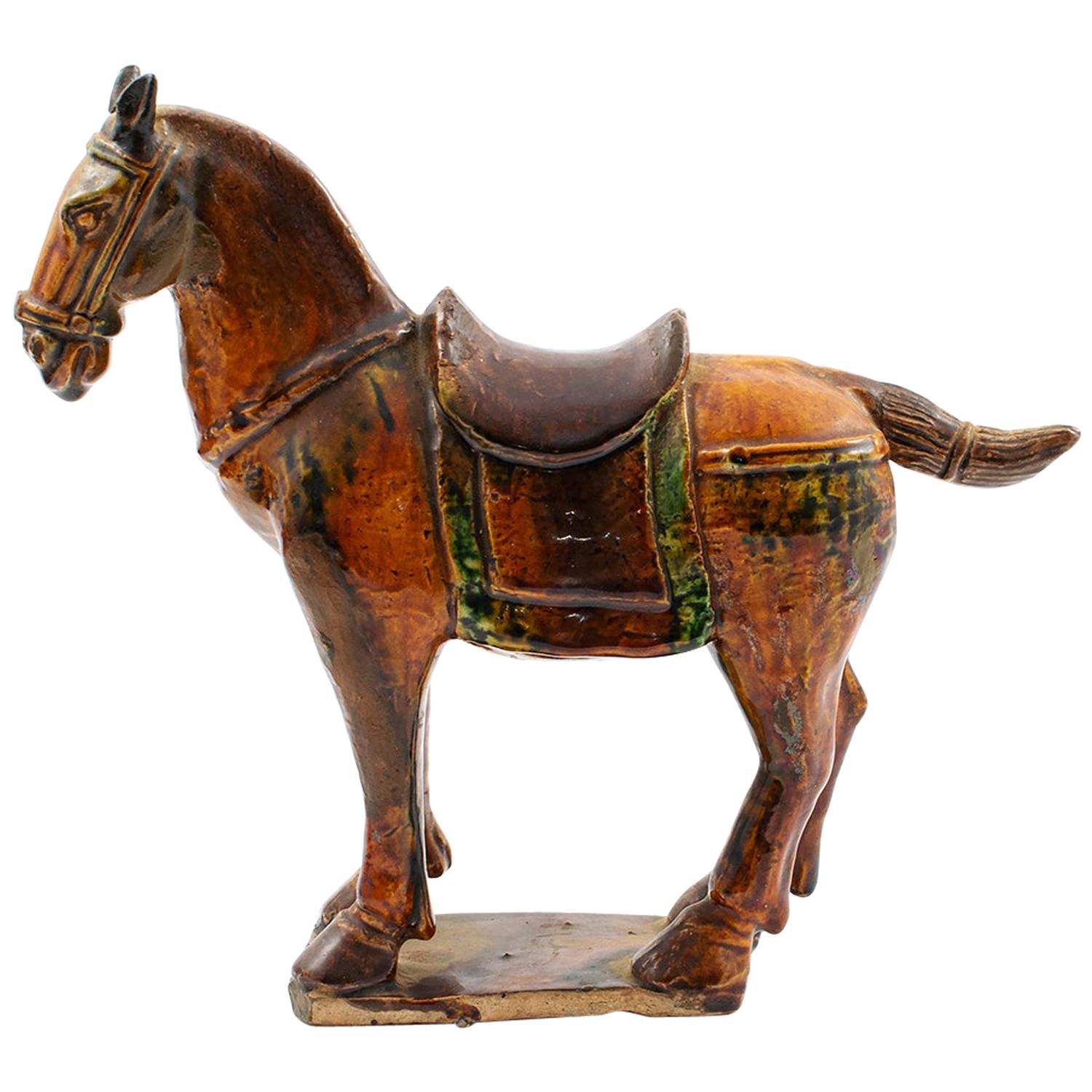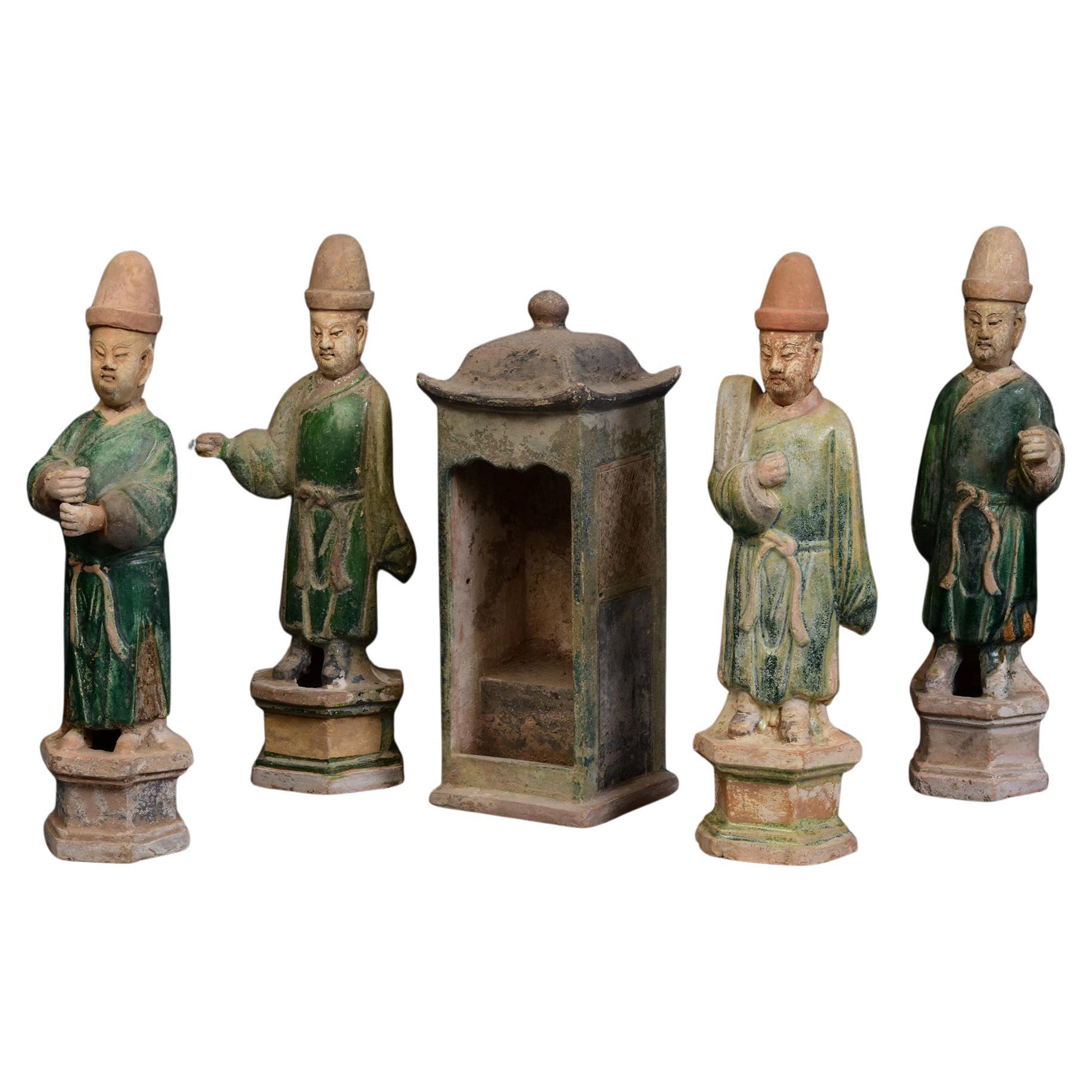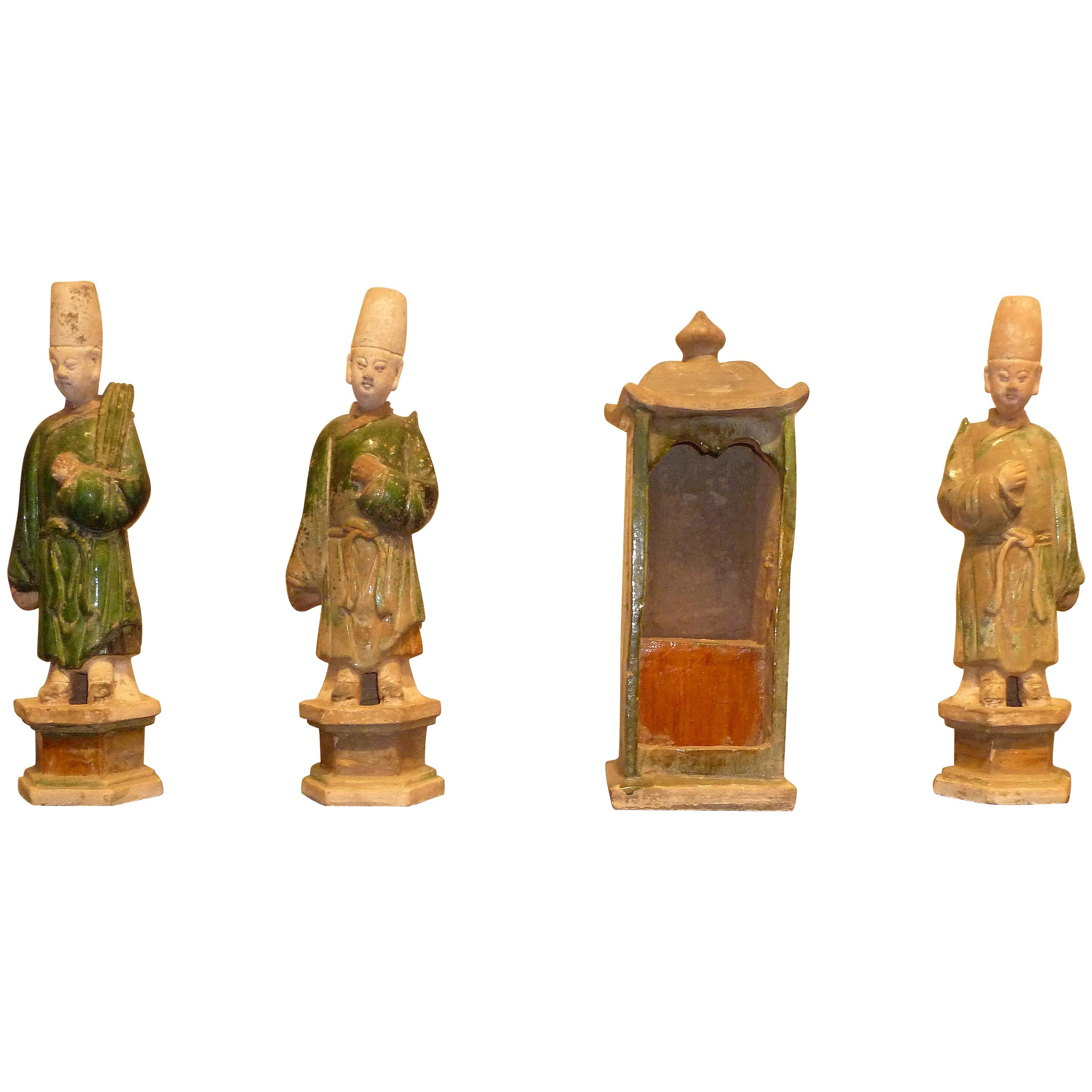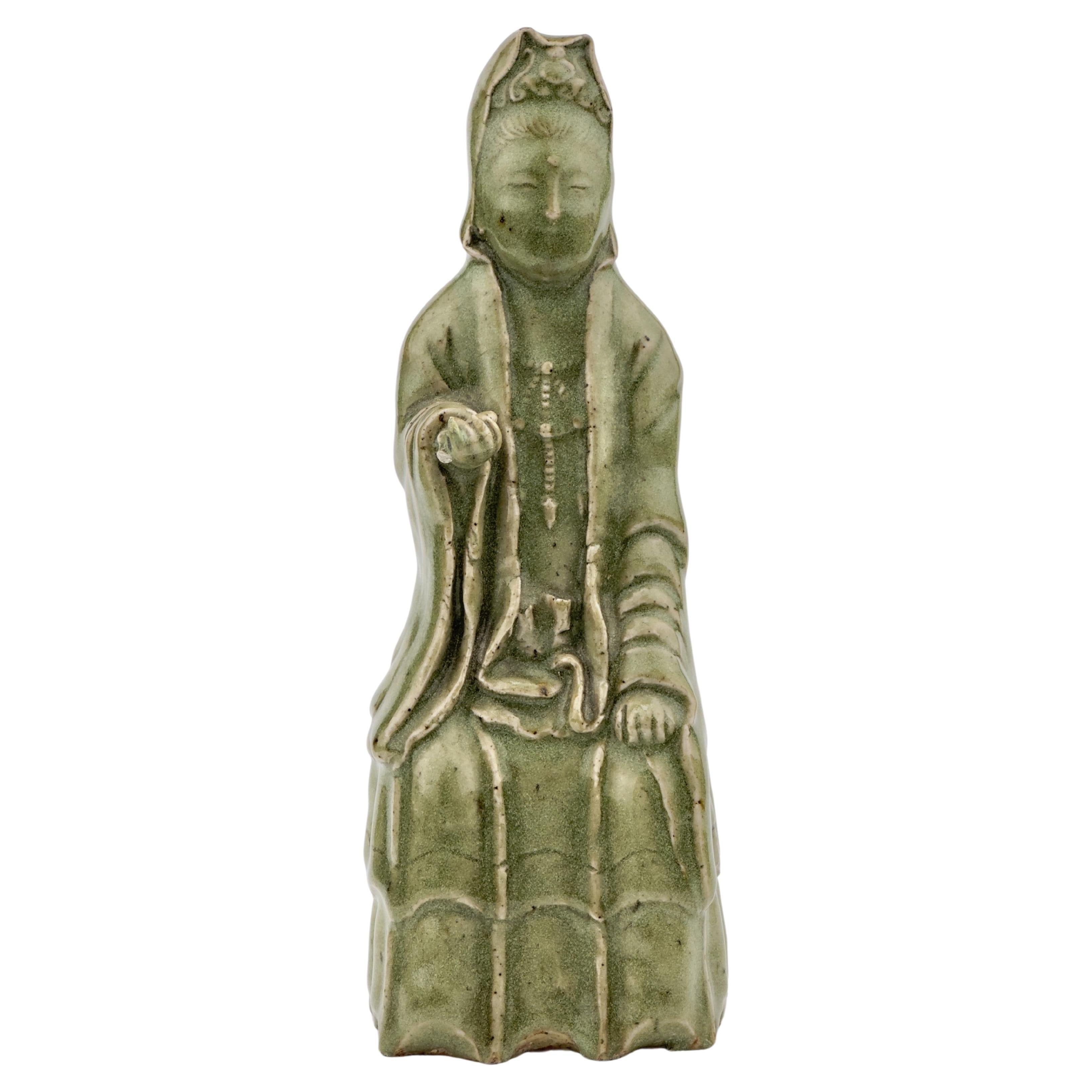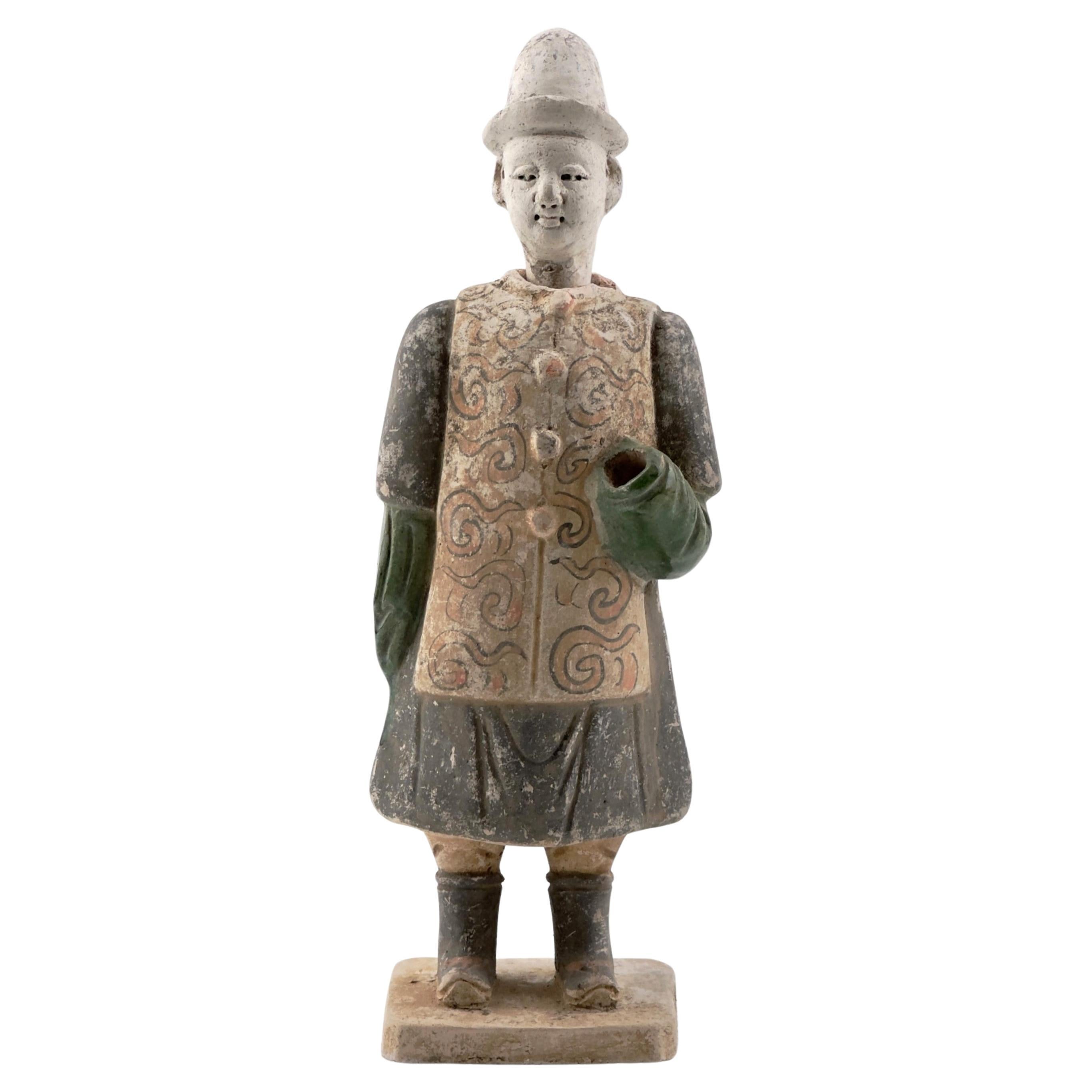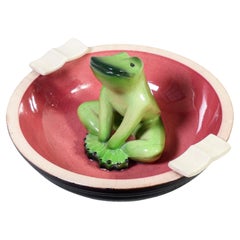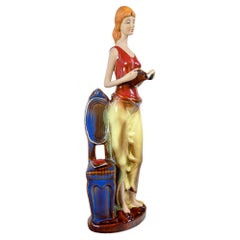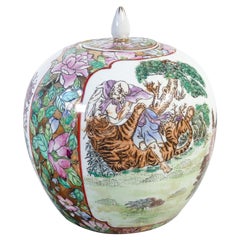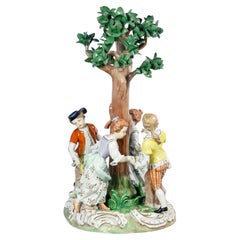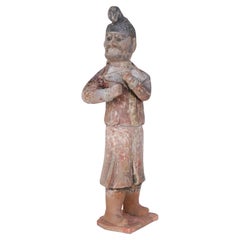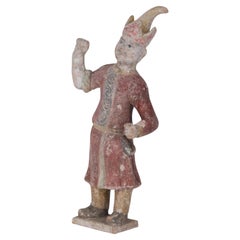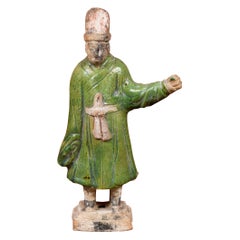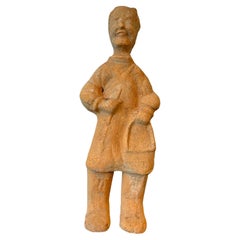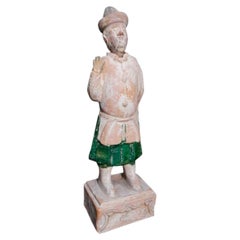
Ming Figurine in Terracotta, Attendant to the Tomb
View Similar Items
Want more images or videos?
Request additional images or videos from the seller
1 of 16
Ming Figurine in Terracotta, Attendant to the Tomb
$598.70List Price
About the Item
- Dimensions:Height: 11.23 in (28.5 cm)Width: 3.75 in (9.5 cm)Depth: 2.76 in (7 cm)
- Materials and Techniques:
- Place of Origin:
- Period:
- Date of Manufacture:17th Century
- Condition:Wear consistent with age and use.
- Seller Location:Torino, IT
- Reference Number:1stDibs: LU6024227003252
About the Seller
5.0
Vetted Professional Seller
Every seller passes strict standards for authenticity and reliability
Established in 2007
1stDibs seller since 2021
49 sales on 1stDibs
Authenticity Guarantee
In the unlikely event there’s an issue with an item’s authenticity, contact us within 1 year for a full refund. DetailsMoney-Back Guarantee
If your item is not as described, is damaged in transit, or does not arrive, contact us within 7 days for a full refund. Details24-Hour Cancellation
You have a 24-hour grace period in which to reconsider your purchase, with no questions asked.Vetted Professional Sellers
Our world-class sellers must adhere to strict standards for service and quality, maintaining the integrity of our listings.Price-Match Guarantee
If you find that a seller listed the same item for a lower price elsewhere, we’ll match it.Trusted Global Delivery
Our best-in-class carrier network provides specialized shipping options worldwide, including custom delivery.More From This Seller
View AllAshtray with Frog sculpture, Tarcisio TOSIN for LA FRECCIA. 1930s
By Tarcisio Tosin
Located in Torino, IT
Ceramic ashtray
with sculpture of
Frog,
Tarcisio TOSIN
for THE ARROW.
ORIGIN
Vicence
PERIOD
1930s
AUTHOR
Tarcisio TOSIN
Venetian ceramist, born Cles in 1904, Tarcisio Tosin comple...
Category
Vintage 1930s Italian Animal Sculptures
Materials
Ceramic
$413 Sale Price
20% Off
Painted and glazed ceramic sculpture. Woman with books. Italy
Located in Torino, IT
Ceramic sculpture
painted and glazed
Woman with books.
ORIGIN
Italy
PERIOD
Novecento
MATERIALS
Painted and glazed ceramic
DIMENSIONS
Height: 33 cm
Width:- 11cm
Depth: 8 cm
CONDI...
Category
20th Century Italian Figurative Sculptures
Materials
Ceramic
Chinese ceramic vase painted with figures from the Taoist tradition. 20thc.
Located in Torino, IT
Chinese vase
ceramic painted with
figures of tradition
taoist alchemy.
Qianlong Nian Zhi Seal
on the bottom.
China, Twentieth Century
ORIGIN
China
PERIOD
Novecento
MARK
At the bot...
Category
20th Century Chinese Vases
Materials
Enamel
$413 Sale Price
20% Off
DRESDEN porcelain sculpture molded and painted by hand. Early 20th cent.
By Dresden Porcelain
Located in Torino, IT
Porcelain Sculpture
by DRESDEN
modeled and painted
entirely by hand.
ORIGIN
Germany
PERIOD
Early twentieth century
MARK
Manufacture of
DRESDEN
MATERIALS
Molded porcelain
and hand...
Category
Early 20th Century German Figurative Sculptures
Materials
Porcelain
Ciotola con coperchio in maiolica smaltata firmata STREHLA Keramik. Fat Lava.
By Strehla
Located in Torino, IT
Ciotola con coperchio
in maiolica smaltata
firmata STREHLA
Keramik.
Fat Lava.
ORIGINE
Germania
PERIODO
Anni 70
MARCA
STREHLA
Keramik.
E' riportata anche una firma alla base ma non...
Category
Vintage 1970s German Vases
Materials
Ceramic
$307 Sale Price
20% Off
Terracotta Sculpture by Arturo Pannunzio, Sleeping Lady, Italy, 1940
By Arturo Pannunzio
Located in Torino, IT
Terracotta sculpture by
Arturo Pannunzio (1891-1953)
(1891-1953),
Sleeping lady
Italy, 1940s
Origin
Italy
Period
40s
Author
Arturo Pannun...
Category
Vintage 1940s Italian Figurative Sculptures
Materials
Ceramic, Terracotta
$459 Sale Price
20% Off
You May Also Like
Chinese Tang Dynasty-Style Terracotta Tomb Figure
Located in Queens, NY
Antique Chinese Tang Dynasty-style terracotta tomb figure of a man with his fists raised, wearing a hat or a head wrap and boots, and standing on a faceted...
Category
20th Century Chinese Export Figurative Sculptures
Materials
Terracotta
Chinese Tang Dynasty-Style Terra Cotta Huren Tomb Figure
Located in Queens, NY
Antique Chinese Tang Dynasty-style terra cotta tomb figure of a Huren (northern tribesmen) man dressed in red robes and a prominent hat, with one fist raised in the air.
Category
20th Century Chinese Export Figurative Sculptures
Materials
Terracotta
Chinese Ming Dynasty Terracotta Court Official Statuette, Original Polychromy
Located in Yonkers, NY
A petite Chinese Ming dynasty green glazed terracotta court official figurine from the 15th or 16th century, with original polychromy. Attracting our eye with its vibrant polychromy,...
Category
Antique 16th Century Chinese Ming Sculptures and Carvings
Materials
Terracotta
Chinese Terracotta Statue Tomb Figure East Han Dynasty
Located in Atlanta, GA
A Chinese terracotta tomb figure (Ni Yong) from East Han Dynasty (25-220 AD), likely from the area of nowadays Sichuan. It depicts a horse groomer with tool and harness in hand. Dres...
Category
Antique 15th Century and Earlier Chinese Archaistic Sculptures and Carvings
Materials
Clay
Chinese Ming Dynasty Terracotta Courtsman Statuette with Original Polychromy
Located in Yonkers, NY
A Chinese Ming Dynasty painted terracotta courtsman figure with original polychromy. Attracting our eye with its weathered appearance and subtle polychromy, this Ming Dynasty terracotta courtsman figure exudes historical charm and elegance. This exquisite statuette, dating from the Chinese Ming Dynasty, features a courtsman resting on a hexagonal base, providing a stable and aesthetically pleasing foundation. Topped with a simple headdress and clothed in a long, flowing robe, the figure showcases a slight movement of the hips, creating a sense of liveliness and grace.
His right arm is extended in a gesture, while his left arm remains hidden under his clothes, adding an element of mystery and sophistication. The original polychromy, though weathered, adds a touch of vibrant color that enhances the figure's visual appeal and historical authenticity.
This Chinese courtsman figure will make for an exquisite decorative addition to any home. Its refined elegance and rich cultural heritage make it a versatile piece, perfect for placing on a commode, side table, or shelf. Whether in a living room, study, or entryway, this Ming Dynasty figure will bring a touch of ancient Chinese artistry and timeless beauty to any interior space.
With its harmonious blend of form and function, this painted terracotta courtsman figure celebrates the enduring appeal of Ming Dynasty art...
Category
Antique 17th Century Chinese Ming Sculptures and Carvings
Materials
Terracotta
A Han Dynasty Terracotta Figure
Located in Chicago, IL
A large Chinese terracotta tomb figure (Ni Yong) from the Eastern Han Dynasty (25-220 AD), likely from the area of modern-day Sichuan. It appears to depict a groom in full costume an...
Category
Antique 15th Century and Earlier Chinese Antiquities
Materials
Terracotta
$12,600 Sale Price
30% Off
